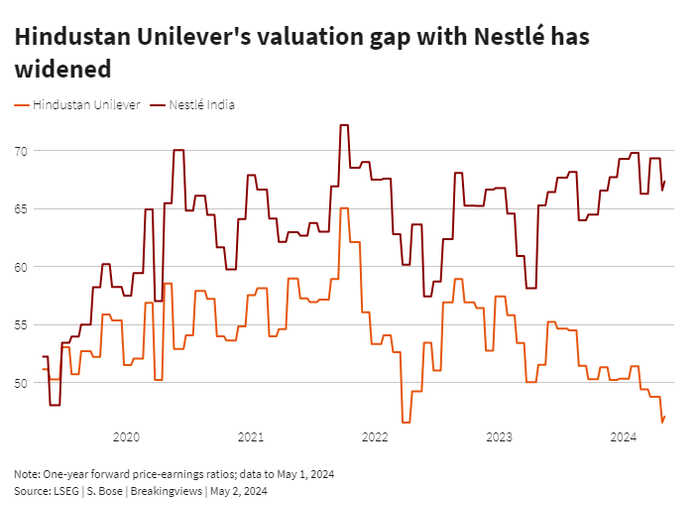Published 15:16 IST, May 2nd 2024
Unilever and Nestlé offer two flavours of India
Demand for staples catering to rural shoppers, such as the company's Brooke Bond tea and Lifebuoy soap, has weakened.
- Republic Business
- 3 min read

Food for thought. Two global consumer goods majors are offering contrasting tastes of the world’s most populous country. The $63 billion Hindustan Unilever last week reported a 1.5% year-on-year dip in earnings, to $307 million, for the three months to end-March. Demand for staples catering to rural shoppers, such as the company's Brooke Bond tea and Lifebuoy soap, has weakened due to what it described as “high levels of cumulative inflation” over the past few years while a dry spell last year hurt agricultural incomes. Smaller regional players are also taking a bite out of HUL's dominant market share. In response, HUL has cut prices in some categories.
The consumption picture is very different across India's cities, where purchasing power of well-heeled households is rising and shoppers are shifting toward more premium products. Those trends helped the $29 billion Nestlé India, which relies on urban customers for 80% of its top line, grow quarterly net profit by 27% year-on-year. Coffee, in particular, is a bright spot: the company announced it is bringing its high-end Nespresso brand of coffees and machines to India this year, with the first boutique opening in New Delhi.
The contrasting performance helps explain the widening valuation gap between the two consumer giants. HUL is trading at a forward price-to-earnings ratio of 47 times, down from 51 times in May 2023, per LSEG data. Meanwhile, Nestlé India shares fetch 67 times, roughly on par to a year ago.

HUL shareholders can take comfort that the worst may be over, thanks to price cuts and forecasts of a normal monsoon season ahead. Morever, the company is clocking double-digit growth in sales of premium brands including Dove. More than three quarters of its incremental marketing spend is towards this segment. Analysts polled by LSEG now forecast sales to grow 6% to $7.85 billion for the next fiscal year.
In a country where 64% of people live in the countryside, rural shoppers are still a vital demographic for any retailer, even if they spend only a third of what their city-dwelling compatriots do on fast-moving consumer goods on a per capita basis. That explains why Nestlé is driving deeper into the hinterland to win over customers in the hope they will upgrade their purchases down the line. The company nearly tripled the number of villages where it's present in the three years to 2023.
With the two rivals expanding outside of their strongholds, competition for India's consumers is heating up.
Updated 15:16 IST, May 2nd 2024